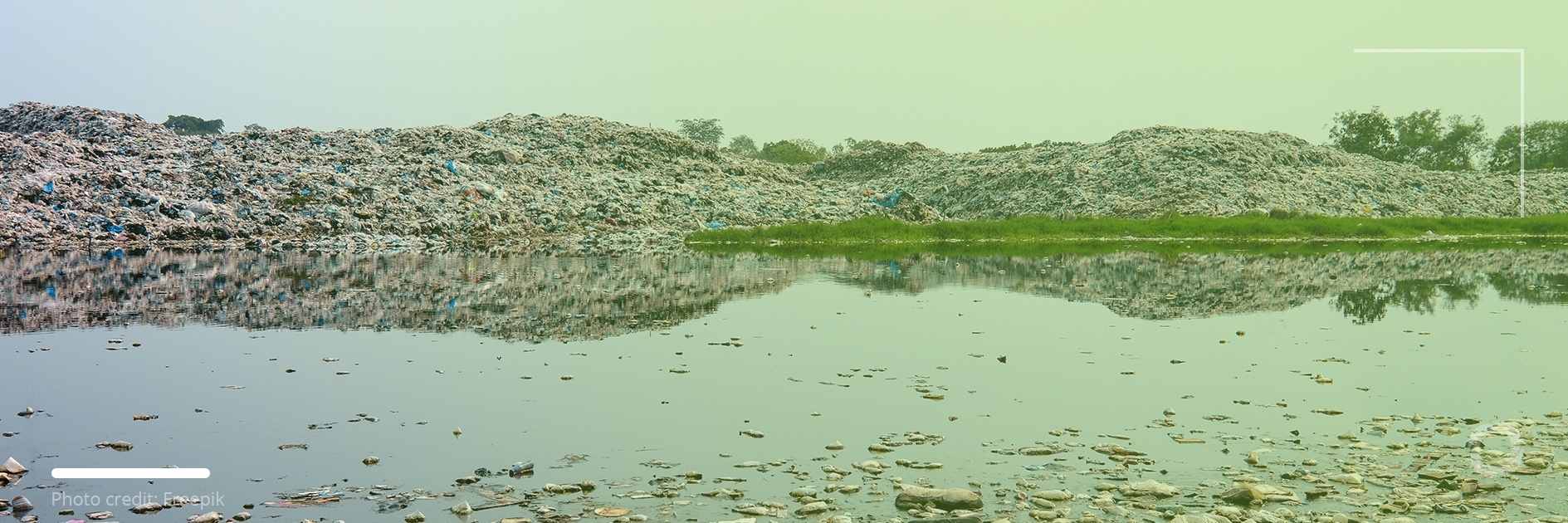Water pollution is an ongoing environmental problem that affects the health of millions of people across the globe. It jeopardizes the normal functioning of natural ecosystems and thus directly threatens marine animals, wildlife, and plants. While multiple factors lead to this, those originating from human activity have the largest negative impact on the environment. This article defines water pollution, presents the causes that lead to it, and highlights the most common types of water contamination.
What is water pollution?
Water pollution refers to the contamination of water sources such as oceans, rivers, groundwater, or lakes with toxic substances that make the water unsuitable for consumption and the normal functioning of natural ecosystems.
While the world has made significant progress towards ensuring safe drinking water for the largest part of the global population (71% or 5.3 billion people in 2017), around 80% of global wastewater is still returned back into the environment without proper treatment. Many international organizations, such as the UN, are encouraging political and economic stakeholders to make the necessary efforts to ensure an adequate wastewater management infrastructure that can keep pace with the rapid rates of urbanization.
What causes water pollution?
Water is polluted by multiple human-induced and natural factors. Those originating from human activity have by far the largest negative impact on the environment and the top five causes of water pollution are:
- Sewage and industrial wastewaters which are considered to be the primary polluting factors that contaminate the environment with various pathogens, organic matter, and chemical pollutants
- Agriculture which leads to the discharge of agrochemicals, drug residues, organic matter, and sediments into the soil and water bodies
- Daily household activities and waste products lead to water pollution. Chemical and organic substances, such as soaps or pharmaceutical elements, once discharged into the sewage system are then difficult to remove. Moreover, household garbage disposed outside of designated dumping sites ends up in natural ecosystems or even in the oceans.
- Mining practices harm the environment and water ecosystems in particular. While the mining community and regulatory bodies have been working towards improving mining practices in recent years, the risks of pollution are still high. Drilling disturbs groundwater systems while mine waste sediments and tailings pollute the water
- Accidental, natural, or intentional oil leaks and spills cause significant damage to water sources and ecosystems. As oil is less dense than water, it spreads quickly over the surface significantly slowing response efforts.
Types of water pollution
Water sources can be contaminated in multiple ways and the type of water pollution can be categorized based on the nature, source, and effects of the pollutant.
- Biological pollution – refers to the contamination of surface water bodies and groundwater by microorganisms (e.g., bacteria, fungi, parasites, or viruses) or organic matter (e.g., hazardous and non-hazardous organic waste)
- Chemical pollution – this is the most common type of water contamination and can result from household, industrial, agricultural or natural processes. Crude oil, pharmaceutical products, or pesticides are just some examples of chemical pollutants
- Radioactive pollution – radioactive waste disposed into the environment may contaminate water bodies and cause significant damage to ecosystems. Volcanic magma, natural gases, and rocks are natural sources of radioactive contamination
- Plastic pollution – about 80% of all waste found in the oceans and seas is plastic which threatens marine species, water quality, food safety, and human health.
Water pollution is a serious environmental problem that involves the contamination of water bodies. Currently, a large proportion of natural ecosystems and human communities do not have access to water of sufficient quality. Biological, chemical, radioactive, and plastic contamination are the main causes of water pollution, all deriving from irresponsible human activity.
See also: World’s most polluted cities
DevelopmentAid is the leading provider of business intelligence and recruitment tools designed to assist those active in the development sector. Join today and gain access to exclusive information on upcoming funding opportunities (tenders and grants) from the largest private foundations.

